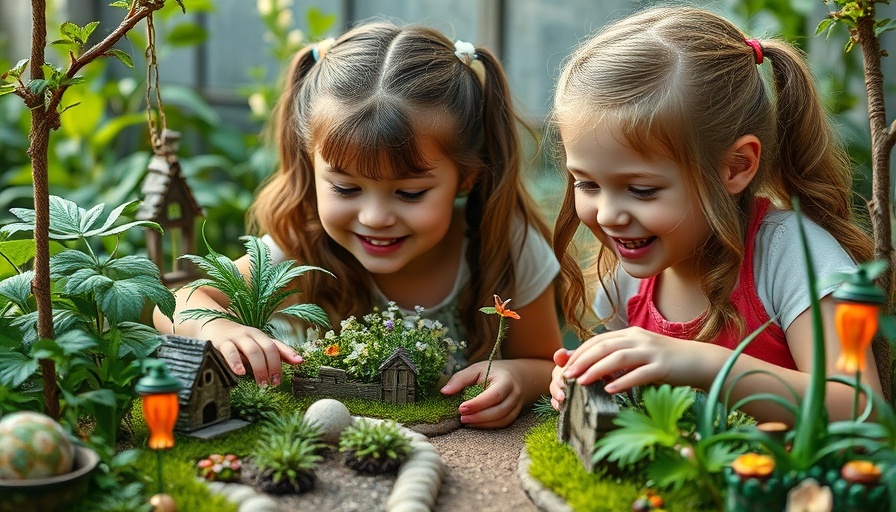
Why Moss is the Secret to Enchanting Fairy Gardens
When it comes to creating a magical fairy garden, one plant can elevate the ambiance from ordinary to extraordinary: moss. This understated piece of nature serves not only as an essential design element but also as a living art form, integrating seamlessly with your fairy-themed creations. Its soft texture, vibrant color variations, and adaptability create an inviting atmosphere reminiscent of enchanted forests.
Transform Your Space with Cushion Moss
Cushion moss (Leucobryum glaucum) is a standout choice for fairy gardens. Its plush, rounded formations mimic the soft hills of a forest, making every miniature scene come alive.
Ideal for spaces filled with dappled sunlight or filtered shade, this moss prefers rich, moist soils but thrives even in compact textures. All it needs is about an inch of water a week, making it a perfect low-maintenance choice for eager gardeners. Can you imagine the tiny fairies frolicking on those soft green mounds? That’s the magic cushion moss brings to your garden!
Creating a Cozy Carpet with Sheet Moss
For flat fairy settings, sheet moss is your go-to. It forms a lush, carpet-like base that not only beautifies but also cushions the feet of mythical creatures strolling through your garden.
Sheet moss thrives in similar conditions as cushion moss, needing a balance of moisture and rich soil. It blankets uneven surfaces, revealing the soft textures that your tiny fairy landscape craves. Incorporating this moss makes it possible to level out uneven terrains in your little world, allowing you to create hidden paths and tranquil spaces.
Exploring the Wild Spirit of Fern Moss
If you’re aiming to infuse your fairy garden with wild charm, fern moss is the way to go. This moss grows in sprawling green tendrils, giving gardens an untamed look that’s both stunning and vibrant.
Fern moss does best in shaded areas, where it can showcase its full height and bushy appearance. Planting it adjacent to stones or logs further emphasizes its natural beauty, inviting fairies to ponder upon twilit adventures.
The Benefits of Incorporating Multiple Moss Varieties
Diversity is key to making your fairy garden visually stimulating. By blending cushion moss, sheet moss, and fern moss, you create layers of texture and color that draw the eye in and keep it moving throughout the garden.
This playful mix allows for whimsy; imagine fairies perched on a soft cushion, wandering over a sheet moss carpet, and exploring the wild terrain of fern moss. Plus, from a gardener's perspective, different moss species can thrive in varied conditions, providing a resilient, adaptable landscape.
Creating Your Fairy Garden: Best Practices
To ensure your moss grows successfully and your fairy garden flourishes, start by choosing the right location. Moss loves damp, shaded areas, so consider placing your garden under trees or alongside shaded pathways. The soil should retain moisture but drain well to prevent rot. A mix of peat and topsoil works wonders.
Regular misting is a crucial part of maintenance, especially during dryer months. This keeps the garden lush and inviting, perfect for those miniature wonders. Consider using decorative stones to complement your moss and protect it from being disturbed as children or pets explore the space.
Inspirational Closing Thoughts
Crafting a fairy garden is truly an art form, and embracing moss as one of your primary components yields both charm and practicality. These types of moss not only enhance the aesthetic value but also require minimal effort, granting you more time to dream up enchanting stories of your fairy inhabitants.
So grab your gardening tools and get creative! Whether you’re transforming a small corner of your yard or creating a dedicated fairy garden, remember that moss can work wonders in your design. Don’t just plant; let your wishes bloom amidst the greenery!
Join the Fairy Garden Movement!
If you’ve been inspired to start your fairy garden journey, share your design ideas, or showcase your completed garden on social media using the hashtag #FairyGardenMagic. Connect with fellow garden enthusiasts and exchange tips on maintaining these enchanting spaces.
 Add Row
Add Row  Add
Add 




Write A Comment